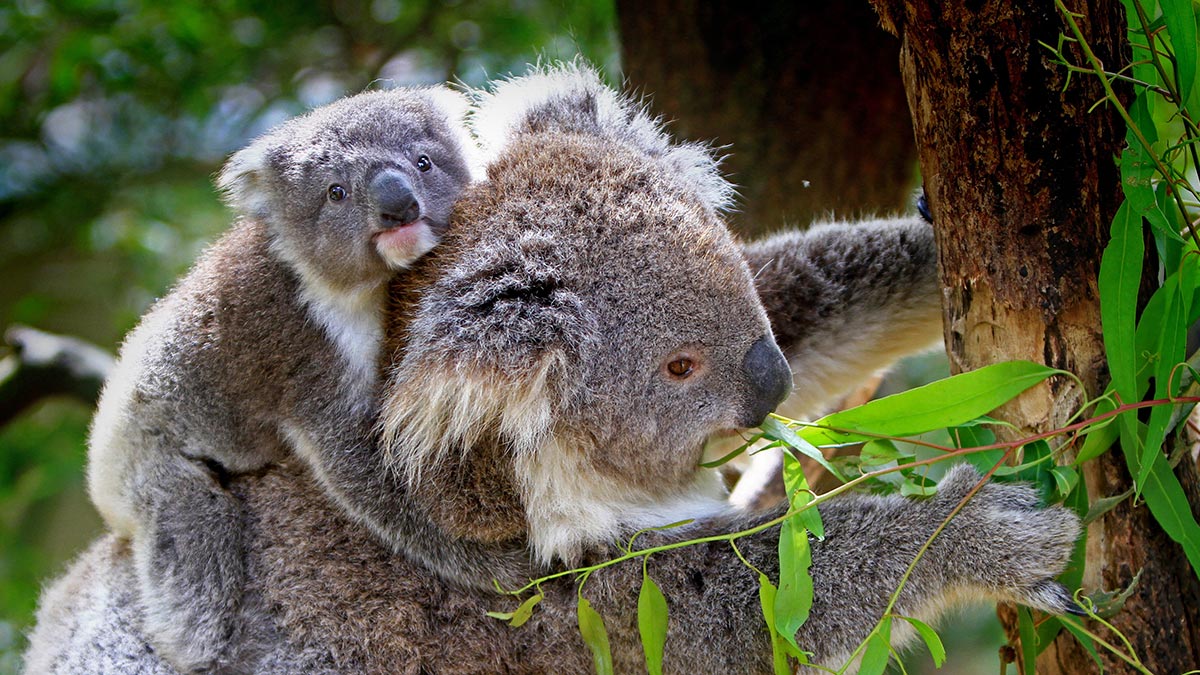
Koalas are marsupials, like kangaroos they give birth to joeys who crawl into their mom’s pouch immediately after birth..
These little babies are called Joeys!
A Koala is a small and fuzzy animal that lives in the branches of trees. They spend most of their lives in the trees and even nurse their young babies there. They’re mostly brown and gray and can have some white patches on their bellies! A young Koala is called a Joey. Unlike some other critter babies, a baby koala is nursed and protected by their mother for anywhere from six months to a year. The baby koala rides on its mother’s back as she moves through the tree tops. Little joeys don’t only drink their mother’s milk when they’re hungry; they can also eat Eucalyptus leaves. They have strong jaws and sharp teeth that can chew on hard food from birth. Though, eucalyptus may be poisonous to some animals, they are the only food that joeys can intake.
Koalas are mammals and reproduce by giving birth. When a baby koala is born, they’re very small! Only a few inches long. When born they’re blind and will develop their sight over time. They don’t yet look like the Mom and Dad Koala we know and love; but once they start growing they will! Koalas can be known as “lazy animals” because they spend more time sleeping than awake! A baby koala can spend up to 20 hours per day sleeping.
Koalas don’t drink water! Almost 90% of the hydration they receive is through eucalyptus leaves and the rest is from rain water. While these little baby koalas have poor eyesight, they can hear very well. It’s this characteristic that helps them to recognize predators by hearing them up to a kilometer away. From a very early age a Joey will develop their strength that helps them to climb from branch to branch by themselves. They have five fingers to grip just like us humans!
A Koala has no natural predators, baby koalas are super cute and are nice to cuddle. Although this doesn’t mean they can make good pets. They love to be within their natural habitat. Remember that they’re still wild animals!